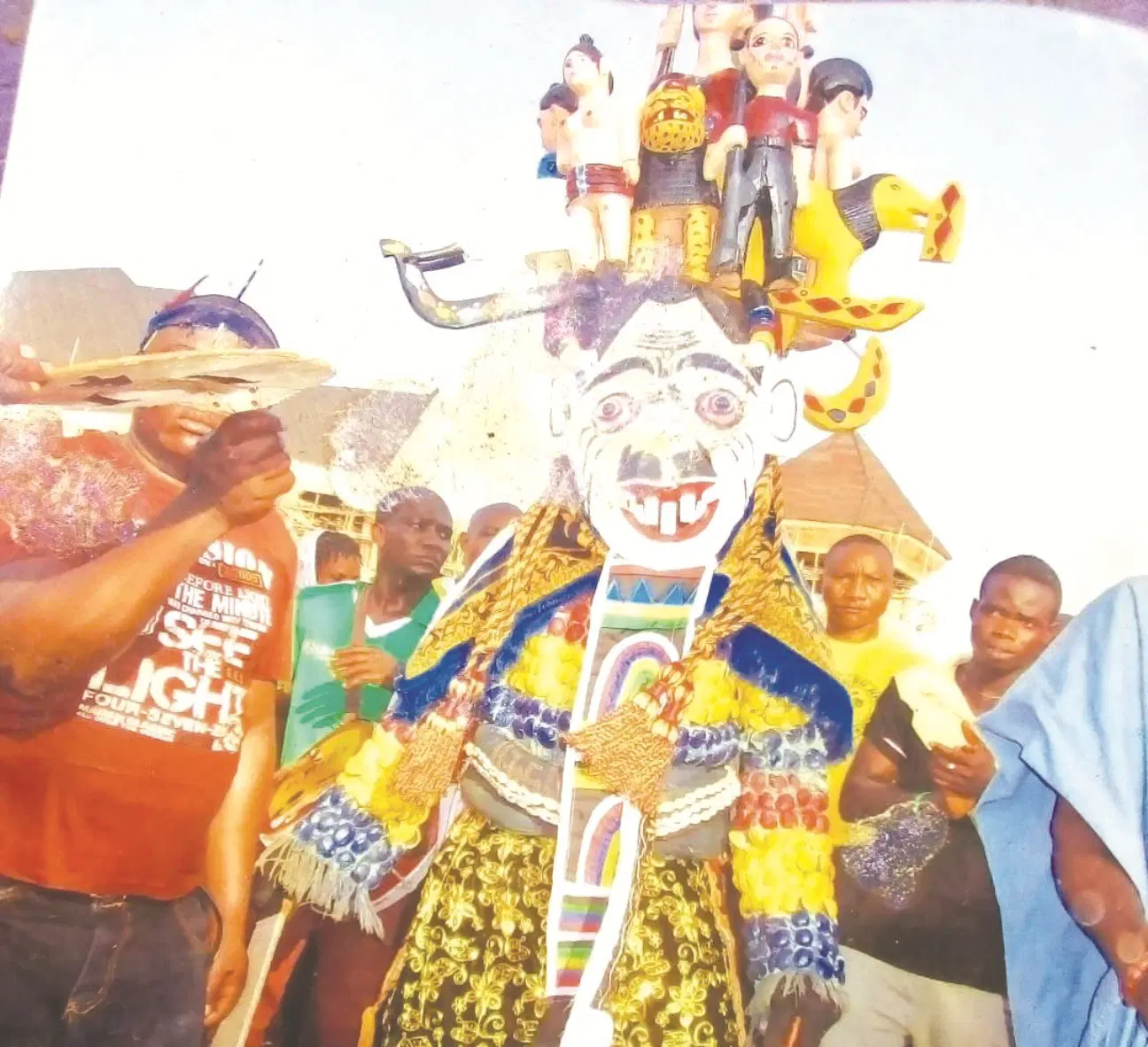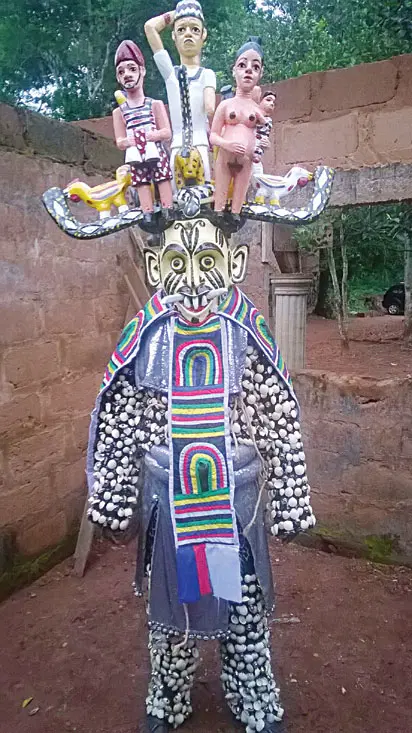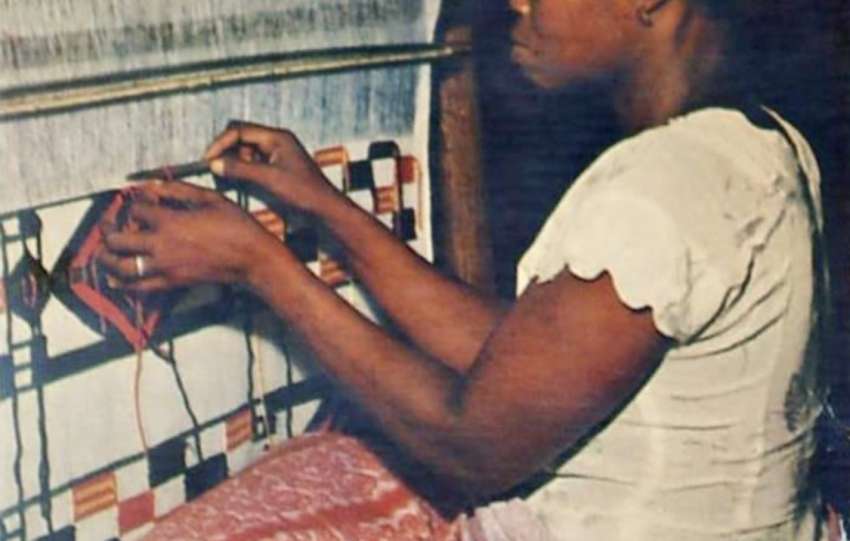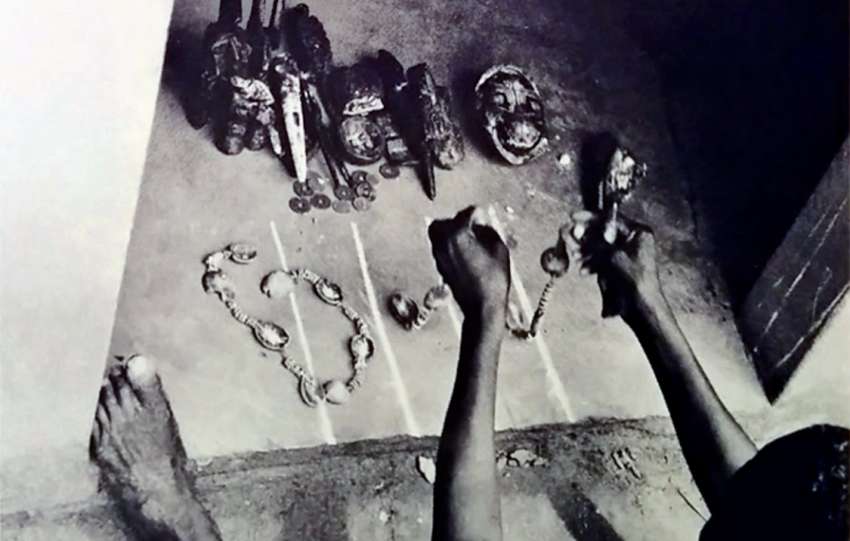
The close similarity in action between this Nsukka Oriọkpa masquerade and the Efik Okpo that derives great pleasure in playfully flogging adolescent girls can be seen in. Oriọkpa intends, however, to beat girls out of a perception that they talk too much, hence naming them “nderure” or gossips. Okpo, by contrast, is known to flirt and, with adult agreement, even seek young women for marital purposes (Onyile 2016:49). For fear of being detected, the Oriọkpa masker keeps away from girls so that they may not have a good look at him. Such transformation and anonymity are indispensable, according to Onyile (2016:51), as it is the mask which gives the human a spirit-like status. At the sight of a girl, Oriọkpa often teases, “Nderure, legde m hee, olegdem ọgadghke ọngelem” (gossiper, just continue looking at me, look at me as if you are not looking). The girls also delight in the chase, running playfully and finding in this an exciting exercise.

In the Nsukka society, the masquerade of Omabe Nsukka is not just a form of entertainment but also serves as an effective critical force in the maintenance of social order and enforcement of laws in communities. The Omabe masks often use mystery and spirituality in their function to uphold community morality and have thus acted as agents of justice. Some of the most significant masquerades are Edi-Ogbene, Echaricha, Ugwu-Udele, Odu-Ugwu, and Ishi-Ma, believed to have divine mandate to arbitrate in cases. This makes them highly culturally relevant in Egba Omabe, since these characters are seen only in the first and last stages, Ida Ma and Ula Ma, respectively. The white-robed masquerades Oriokpa or Arika is an earthly agent of spiritual forces who further wraps Omabe in mystery within which the social fabric of the community is wrapped.
Moreover, Omabe allows only initiated males to take part in its activities; hence, its activities and songs are shrouded in secrecy during performances. This no doubt keeps the women and children away from observing some of these rituals, hence keeping this tradition intact. The “Atta Nwe Ala” greeting, meaning “Atta owns the land,” further reflects Igala influence in the place, highlighting the importance of Omabe in the Igbo society. It is also a rule that warnings are given to non-participants in Omabe to avoid masquerades as a way of commanding respect by touching the ground – the “Nja” rule of the participants. The rich significance of Omabe is further expressed in the Imufu community, Enugu Ezike, Igboeze North, Enugu State, where there is an Omabe festival celebrated every five years in fanfare. These are masqueraders that are believed to be agents between the human and spiritual worlds: highly influential officials including Mgbedike, Oshagenyi, Ajulaka.
Even as part of the Omabe tradition, it’s essential to follow the rules—this isn’t ancient times. Avoid causing any damage with your Arika, or you may face correction from your peers, which won’t be a pleasant experience. © Aro Chukwubundu.
This is interesting because it also goes after one called Ediogbene, a stronger masquerade figure. The only reason Ediogbene pursues and tries to flog any person in its way, and the Oriọkpa takes to its heels on sighting it, which explains why the saying goes that “Ediogbene and Oriọkpa are not of equal strength,” with such a chase serving to point out the superiority of Ediogbene. This dangerous look of a masquerade is fully completed with a costume made from African civet skin, joined with powerful medicinal charms.
On Ọmabe market day, Ọmabe masquerades officially initiate ceremonial activities and revelry. The following day, Ahọ is subdued; only the agbarada gong calls the members and spectators to the village arena for the inaugural musical rite. Bush meat will be available for consumption, along with porridge and ọkpa; bush meats are traditionally placed right into the recipient’s mouth, accompanied by a word of gratitude. Songs full of social values highlight the unity and positive values of the society in Nsukka.
Announced by an “Omu” carried by a Kakpo masquerade, Ula Ma, or “Onwa ilo Mmuo,” is the eighth month of the Igbo calendar, marking the forthcoming departure of the spirits. In this final phase of the festival, three successive Orie days are filled with various rituals: Ashua Mgboto, Afia Ula, and the last Orie-all tinged with secrecy and purification. On Ashua Mgboto, younger women are sent to retire from the stage where Kakpo dances alone and Ashua Ula presents both Kakpo and Edi masquerades, which is the climax of the festival.
The Omabe, Kakpo, Arika, Oriokpa, and Njaba Ode of the IHE/OWERRE community in Ideke Nsukka, Nsukka LGA, celebrating their Ụla Ma (Ọnwa Ilọ Mmụọ) Note: If you are not part of the Mmonwu (masquerade society), please avoid the road, especially if you are not in a vehicle or if you are a woman, as it is their designated day. © Aro Chukwubundu.
Sixteen days after Ọmabe’s initial appearance, the mmaji ọnụọkachị ceremony invites crowds to witness Echaricha’s performance. This vital dance, as beautifully described by Chinua Achebe, has Echaricha leap to a central mound, small metal discs glinting as they dance in the evening light, electrifying the audience. The grand finale has each masquerader produce an earthenware pot called akere, symbolically decorated for Ọmabe’s farewell performance, filled with profoundly stirring music like punishes the wrongdoer and farewell Ọmabe.
The less-known masquerades are heralded at dawn, parading the village streets in ritual pilgrimage, including the Obele Monwu and Ajija, until the grand masquerade, Eji. Larger masks dominate by noon, garbed colorfully with beads, animal skins, and symbols of spiritual power, breaking only to pay homage to the eldest in the village and combining spirits from ancestors with the living. The villages ring in excitement, vibrating to drums, gongs, and flutes holding all who witness this sacred spectacle in awe.
There is a procession to take Ọmabe to Ugwu, where it returns to the spirits, after which the rituals are considered complete under the sacred Iroko tree. This is accompanied by numerous omens: for example, some Okpe bird traces; therefore, this serves as an indicator that the festival has been satisfactorily closed. In this regard, the villagers keep feasting and giving the initiates food and other items in celebration of the restored harmony through the festival. This would be a month afterward, and would give the farmers some rest and a quiet close to the year’s ritual activities, in fulfillment of the outstanding duty of Omabe as a cultural icon and an emblem of unity among Igbo people.
References
- Victor C. Uchendu – The Igbo of Southeast Nigeria. Holt, Rinehart and Winston, 1965.
- Adiele Eberechukwu Afigbo – Ropes of Sand: Studies in Igbo History and Culture. University Press, 1981.
- Aro Chukwubundu. Twitter post. Retrieved from X (formerly Twitter), (October 2024.)
- Vanguard News. (2015, May 8). Omabe masquerade festival: Imufu community’s cultural heritage of all ages. Vanguard Nigeria.
- Vanguard News. (2020, September). The Enugu community celebrates the Omabe festival in grand style. Vanguard Nigeria.



